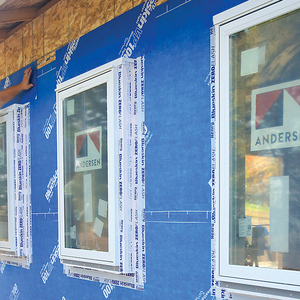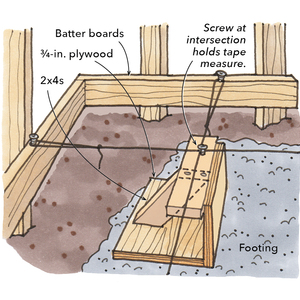Best way to put boxes in lathe & plaster

Okay, I’ve done way too much of this, and gotten darn good at it, having tried ALL methods.
The best way –
Locate the position – vertical centerline should be between two lath strips. Use a 1/4″ wood chisel (yeah, the plaster will dull it); careful flake out the plaster in the shape required, using only the heel of your hand to bump it in, and a twisting motion to clear the debris. Once the plaster (only) is removed, vacuum up the crap. Using a new utility knife blade, make “V” crosscuts in the wood lath, at the edges of the opening; remove two lath sections. This will usually give you the right vertical clearance.
Use the metal box with the truncated corners (obviously); set the depth on the ears to the plaster thickness. Use (4) TINY philips panhead screws (like #4X3/8″) so as not to crack the lath strip above and below the cut strips.
The reason for this method? NO POWER TOOLS; the dust just falls straight down; no shaking that cracks stuff now or later.
Trust me, I’m right on this. You could do it another way, but as my old dad used to say, “that’d be WRONG!”
Forrest – cocky



















Replies
And if you've got 50 of them to do, and you're not getting paid cuz it's your own house? And the plaster is already cracked and pulling away in mutliple spots?
Get out th epower tools, all of 'em, cuz you'll get tired of doing it one way and burning through bits (e.g., with a rotozip), then you'll switch to another way, and get tired of that (perhaps jigsaw), then you'll finish the job up by demonstrating what an artist you are with a a recip saw. Trust ME, I've been there. :)
Ahh, but if you've got the room taped off and full of plaster dust anyway, you could pull out the 4 1/2" grinder with the diamond blade.
It won't really be faster than your method sounds, but you'll get to use a power tool.
I'll have to try your method out sometime. The sawzall does make a mess of the lath.
zak
"When we build, let us think that we build forever. Let it not be for present delight nor for present use alone." --John Ruskin
"so it goes"
I have pretty good luck cutting the lath with a new (i.e. still pretty sharp) rock saw. Actually, any small saw that cuts on the PUSH stroke would work. Cutting on the PULL stroke just wants to pull the lath away from the framing and cause damage.
Cool. My rock saw's old and pretty darn dull!.
My experience even with the push stroke is that if you're not near a stud, the lathe can flex backwards and pop off the "keys" where the plaster is squeezed through the lathe.
Forrest
Rotozip with plaster cutting bit...carbide. Or what Zak said, grinder with a diamond blade. I trust what you say but I trust myself more. I too have done thousands of them over the years. Really the best of the best way is....
whatever works.
Maybe I just need to get the right carbide cutter. My (PC-brand) Roto-zip-like thing just makes lots of dust, then a lot of smoke as the now-dull bit hits the old wood.
You got a specific bit recommendation?
Forrest
Forrest, you've got the plaster removed from the spot.
MM with an e blade.
Buy me a plane ticket, you cut the plaster, I'll follow up with the MM.
Done.
Can I bring my clubs?A great place for Information, Comraderie, and a sucker punch.
Remodeling Contractor just outside the Glass City.
http://www.quittintime.com/
I guess it depends on the properties of the plaster you are trying to cut through. I have had plaster that was so loose even a screwdriver was too much tool for the job. A recip saw would have brought the whole wall down. I have also had plaster so hard that I broke out the electric drill with 1/4" masonry bit to outline the box opening.
Right on with the small screws to hold the plaster ears to the wood lath.
But I never use the GEM boxes, the metal ones with the cut off corners in back. Not enough cu in for most applications. Yes it is tricky if you have wires exiting the box on both top and bottom, but a slight relief can be cut in one lath if necessary.
To those that use a saw, I think a pull saw is better to cut the lath, at least you can brace the plaster from your side of the wall to keep the plaster from moving. Old lath just seems to crack on the push stroke. One could argue that since you have cut the lath and the plaster has set, the lath could be removed from service at this point.
Frank DuVal
You can never make something foolproof because fools are so ingenious.
I know this is the slow method, but I've had good luck with fine tooth hacksaw blades for cutting the lath. They hardly grab the wood at all on the push or pull.
Rotozip carbide bits don't like wood at all, burns rather than cuts. So I make two passes, carbide bit cuts the plaster, wood bit for the lathe. I also use the Rotozip vac attachment, which helps alot with the dust.
This method is a sort of a pita, unless you have two Rotozips or an extra Dremel for the wood bit, but it does provide a clean hole in hard plaster without tearing the lathe away from the wall.
your way is certainly the most quiet and clean.
just not sure about them little screws though
.
.
.
, wer ist jetzt der Idiot ?
McD,
That's interesting - I see your point about not "whipping dust" with power tools - I use 3 1/2 deep boxes if there's space. I've seen enough of those 2 1/4 bevel back boxes for a lifetime. It's as if they didn't sell anything else for 50 years - so it seems in these old houses.
So would you elaborate more on the utility knife v groove thing? How deep do you "v" groove? It seems to me like you would tear something up when you try to pull the lath out.
By "V" cut, I mean making vertical cuts, transverse to the wood lath. If you just try to cut straight through, the utility knife will bind. On the other hand, if you angle the knife to the left as you cut down, then to the right the next stroke, you continually make clearance for the knife - it really does cut faster than you'd think through the super-dry wood.
In a matter of moments, you cut all the way thru the 5/16" thick lath. The other side, I usually cut halfway through, and it will gently break as I push it back.
Note - I usually put a box 1-3 inches from a stud, and ALWAYS cut the side farthest from the stud first.
Forrest
I agree that hand tools are the best way to do small holes in old plaster. Instead of the chisel, I like a diamond blade hand grout saw to cut the plaster. For some reason, it seems to cut easier than with steel.
-- J.S.
I use a utility knife to cut the plaster out as a block, but I'm going to try the grout saw idea the next time I do one.
Multi-Master for the lath. Everything else is a distant second best.
I also just use old work boxes, with the ears in back. It can sometime be difficult to get them plumb and level.